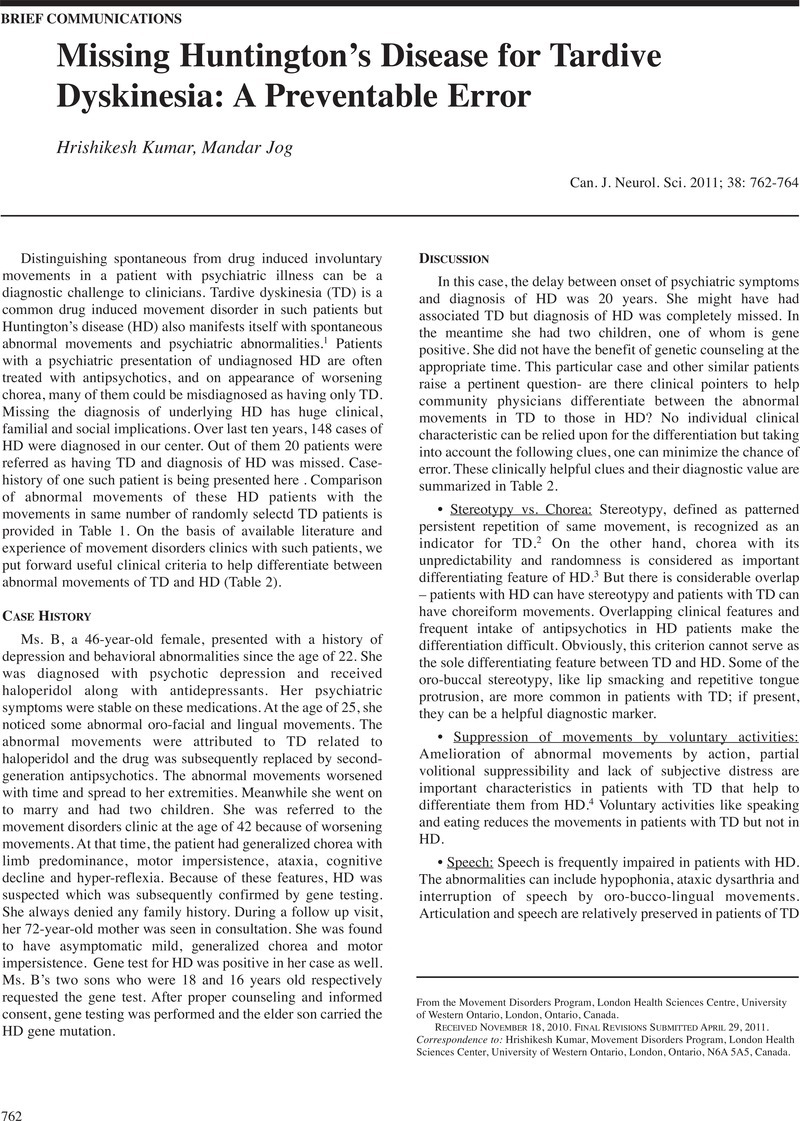Crossref Citations
This article has been cited by the following publications. This list is generated based on data provided by Crossref.
2012.
From the Literature.
Molecular Diagnosis & Therapy,
Vol. 16,
Issue. 3,
p.
191.
Micheli, Federico E.
2014.
Chorea.
p.
249.
Mustafa, Feras Ali
2017.
Misdiagnosis of Huntington's disease.
The Lancet Psychiatry,
Vol. 4,
Issue. 1,
p.
21.
Mulroy, Eoin
Balint, Bettina
and
Bhatia, Kailash P
2020.
Tardive syndromes.
Practical Neurology,
Vol. 20,
Issue. 5,
p.
368.
Ghadery, C. M.
Kalia, L. V.
and
Connolly, B. S.
2022.
Movement disorders of the mouth: a review of the common phenomenologies.
Journal of Neurology,
Vol. 269,
Issue. 11,
p.
5812.
Sammarra, Ilaria
Giugno, Alessia
Rossi, Marco
Pucci, Franco
and
Labate, Angelo
2022.
Enlarging the clinical spectrum of chorea-acanthocytosis.
Neurological Sciences,
Vol. 43,
Issue. 2,
p.
1453.



